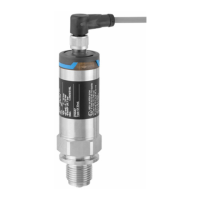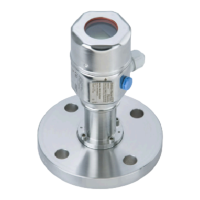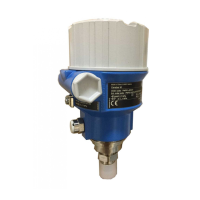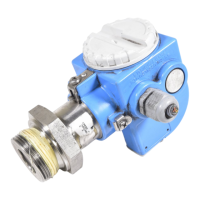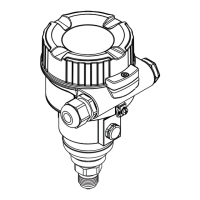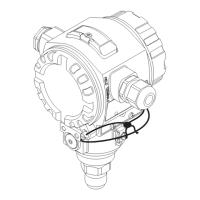Commissioning Ceraphant PTP31B, PTP33B
34 Endress+Hauser
8.7.2 Window function
• SP1 = switch output 1
• SP2 = switch output 2 (optional)
FH1/FH2 Upper value for pressure window, output 1/2
FL1/FL2 Lower value for pressure window, output 1/2
Navigation FH1/FH2
FL1/FL2
Note The window function is implemented using the "FH1/FH2" and "FL1/FL2" parameters. Since
the parameter settings depend on one another, the parameters are described all together.
• FH1 = Upper value of pressure window 1
• FH2 = Upper value of pressure window 2 (optional)
• FL1 = Lower value of pressure window 1
• FL2 = Lower value of pressure window 2 (optional)
1
2
0
FH1/FH2
FL1/FL2
0
FNO
p
t
1
FNC
A0027370
2 FH1/FH2: upper value of pressure window; FL1/FL2: lower value of pressure window
0 0-signal. Output open in quiescent state.
1 1-signal. Output closed in quiescent state.
2 Pressure window (difference between the value of the high window "FH1/FH2" and the low window "FL1/
FL2")
FNO Closing
FNC NC contact
Description The upper value of the pressure window "FH1/FH2" and the lower value of the pressure
window "FL1/FL2" can be defined with these functions (e.g. for monitoring a certain
pressure range).
When the lower value of the pressure window "FL1/FL2" is reached (with increasing or
decreasing pressure), an electrical signal change takes place at the switch output.
When the upper value of the pressure window "FH1/FH2" is reached (with increasing or
decreasing pressure), an electrical signal change takes place at the switch output.
The difference between the upper value of the pressure window "FH1/FH2" and the lower
value of the pressure window "FL1/FL2" is known as the pressure window.

